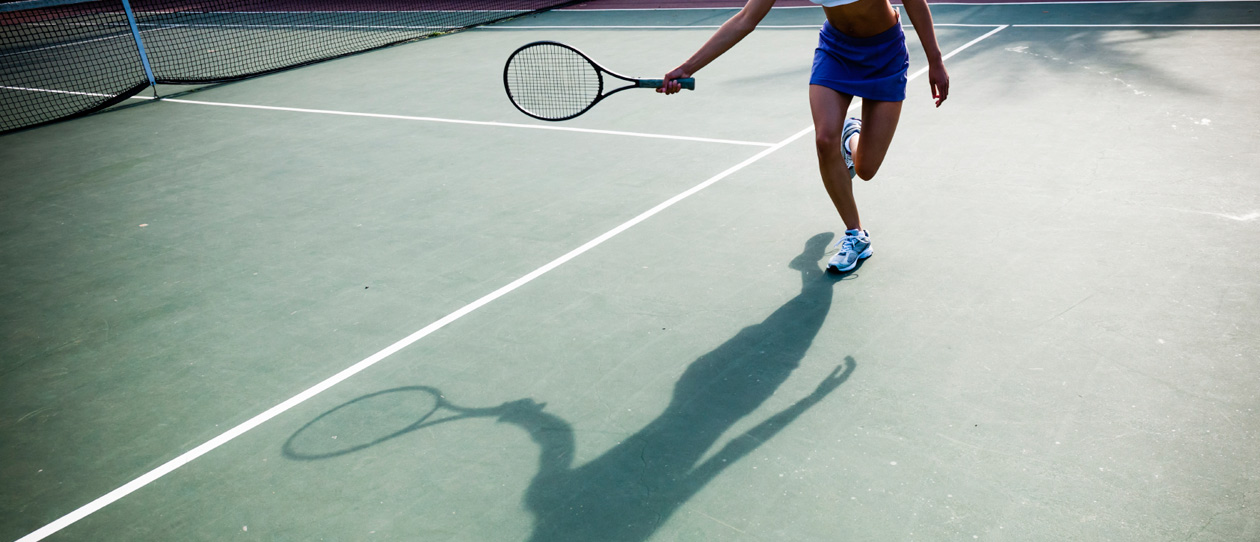9 Health Benefits of Playing Tennis
The world’s favorite racquet sport is an outstanding choice for your health. A full-body workout, tennis engages numerous organ systems and muscle groups. From Ha Dong to Tay Ho, there are lots of tennis courts around Hanoi. Make sure your coach is providing you these benefits during your next private or group tennis lesson.
It’s sure to get your heart pumping, your quads and hamstrings firing, and your competitive side engaged—all while you spend time outdoors with a friend. Plus, tennis is a social distancing-friendly sport you can play safely during the COVID-19 pandemic.1
Here’s a look at nine physical (and mental) health benefits of tennis for people of all ages.
Supports Cardiovascular Health
Aerobic activity of any kind works to strengthen your heart. Jumping for the perfect swing, running down the court, and chasing runaway balls are some of the activities that increase your heart rate as you play tennis.
As your heart rate rises, your breathing becomes deeper and faster, increasing oxygen and blood flow throughout the body—all of which contribute to a stronger cardiovascular system.2
A 2017 study found that participation in racquet sports was related to a 56% reduction in death from cardiovascular disease (and a 47% reduction of risk of death from any cause).3
Aids Weight Loss

Engaging in aerobic exercise through tennis not only protects your heart—it may also help you lose weight, if that’s a personal goal. In a 2012 study, researchers found that obese men and women who added aerobic exercise to their routine five days a week lost significant amounts of weight over 10 months, even when they made no changes to their diets.4
Depending on your weight and the intensity of your game, you can burn a few hundred calories per hour playing tennis.5 Combine this activity with a healthy diet to maintain a healthy weight.
Increases Range of Motion

The broad movements of tennis, such as swinging and reaching, are an excellent means of increasing your range of motion. These dynamic, stretching motions lubricate your joints and strengthen muscles and tendons.6 However, if you’re just starting out on the court, it’s smart to work your way up to these movements prevent injury.
“Prior to your tennis match, a warm-up is important to reduce your risk of injury and improve your performance,” says registered kinesiologist and functional movement specialist Marian Barnick.
“Move your joints through their normal range of motion (not stretching) to get the blood flow into the muscles you’ll be using on court; especially the shoulders, knees, and thoracic spine. A number of controlled repetitions that mimic your moves on the court is the best way to get your body ready.”
Improves Balance

Good balance is a must in tennis (at least, if you’re not going to topple over every time you lean over for a backhand). By using a racquet, you’re training your body to maintain its equilibrium while hitting and serving with a two-foot extension of your arm.
Decreases Osteoporosis Risk
Osteoporosis occurs when the creation of new bone can’t keep up with the deterioration of old bone, causing bones to break more easily. Most commonly, this condition affects women, and your risk increases as you age.7
While you might think that exercise would increase the risk of fractures, the opposite is actually true. According to the National Institutes of Health, many types of exercise help prevent osteoporosis—especially weight-bearing exercises.8
In tennis, each time you raise your racquet, you’re working against gravity. This force exerted on your bones helps them grow stronger.
Promotes Agility
Who wouldn’t like to be more agile? The fancy footwork of tennis can help you get lighter on your feet.
“Tennis is not a straight-line sport,” says Barnick. “Players have to cover the court, which requires forward and back, side-to-side, and diagonal movement patterns. Tennis players frequently change direction, stop and start, and accelerate and decelerate. They also need to change their vertical positioning for low balls as well as overhead volleys and serves.”
According to Barnick, this constant switching of movement in tennis trains the body and brain to adapt more quickly.9
Enhances Motor Control
“Motor control is an awareness and ability to stabilize one body part while another body part is moving,” says Barnick. The movements of tennis can uniquely support this area of physical fitness.
“In tennis, motor control is necessary as you move your arm to swing your racquet. At the same time, your core muscles stabilize your hips so you don’t fall as you swing,” says Barnick.
It’s not just your arms and legs that may become more coordinated from racquet sports. The body rotation, stopping and starting, and reaching and balancing tennis requires also may stabilize your core.
“[Tennis] develops the core in more ways than simple postural exercises or abdominal floor routines,” Barnick says.10
Increases Vitamin D Exposure

Getting adequate vitamin D has been associated with a stronger immune system, improved heart health, and reduced risk of cancer.11
Your vitamin D status may even correlate to your risk of complications from COVID-19 (though more research is needed to draw firm conclusions) Still, many people are deficient in this critical nutrient.
The more you play tennis outdoors, the more likely you are to soak up vitamin D from sun exposure. Some studies have shown that the body receives the most vitamin D from sunlight near midday, so consider scheduling your match around noon, so long as it’s not too hot at that time.
Just don’t forget to wear sunscreen! Too much UV radiation from sun exposure increases the risk of skin cancer.
Provides Social Interaction

As everyone knows, you can’t play tennis by yourself. Lobbing a ball back and forth requires a partner. The benefits of playing with another person are twofold.
Your mental health will get a boost from social interaction with your fellow player. Studies show that face-to-face social contact reduces the risk of depression, particularly among older adults.14
The social aspect of a tennis match with a friend may affect your physical health, too. Research has linked social isolation with high blood pressure, cancer, greater risk of mortality from heart disease, and other health risks Getting on the court with a pal can help you feel a greater sense of community and fewer feelings of isolation.








